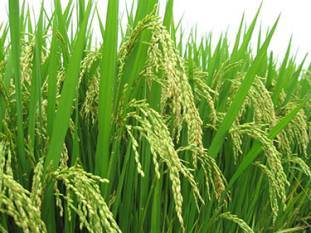NEW DELHI, 6 September 2022: Rice is a staple food for more than half of the global population and India is the second-biggest consumer after China. Rice cultivation in India occurs mostly under rainfed conditions, which makes the crop highly vulnerable to unpredictable weather conditions.
The inadequate amount of water available for farming, infrequent power supply and high crop input cost are other major issues that farmers are concerned about. If farmers choose the right type of seeds, the majority of problems can be tackled. For example, hybrid rice appears to be a perfect solution to achieve the desired results.
Since rice is consumed widely in India and the rest of the world, it plays an important role in how we grow our crops, the impact on natural resources, achieving nutritional security and food security. Scientists believe that the rice crop has great yield potential that can be tapped.
Hybrid rice proves that point as seen in China, that has managed to feed its people —20 percent of the global population-- using 10 percent of the total arable land in the world. Hybrid rice improved food security in China and few south-east Asian countries. It has much better productivity rate as it produces 30 percent more yield than the best inbred varieties available in the market. Hybrid rice is consumed in many parts of the world, especially in China, Indonesia, and Vietnam. Adoption of hybrid rice is picking up in India as well.
Rice crops are susceptible to biotic stresses such as fungal blasts and bacterial blight, which hinder growth and reduce yields. Hybrid rice varieties are resistant to blast and blight through the introgression technique and are developed to build resistance to insects.Hybrid rice has more vigour, which makes it more competitive over weeds.
So, seedlings are in a better position to absorb water and nutrients in the soil. Farmers can also save money as they require less seed - six kg of seeds per acre compared to 20-30 kg for the inbred varieties. All this ensures that crops remain healthy and disease-free and provide the highest possible yield.
Hybrid rice crops develop strong resilience to climate impacts. This is very important for India, where farm operations are reeling under adverse weather conditions like frequent storms, floods, droughts, irregularities and extremities in the crucial monsoon rains. In Punjab, hybrid rice can do wonders for farmers as it provides solutions to the burgeoning problems such as depleting water resources, power crisis, saline soils and higher expenses on crop output. Hybrid rice varieties are suitable for all agroclimatic regions.
Studies show that hybrid rice emits around 20 percent less methane than inbred varieties.Moreover, it reduces methane concentration in soil pore water. Efforts are ongoing to produce new hybrid rice varieties that have the tolerance to high fluctuations in temperature, salinity, and droughts in order to ensure adequate food supplies to the global population in the wake of climate change.
There is a need to increase food production through sustainable ways of farming. Given the limited availability of land, the focus will be on increasing productivity and achieving sustainability by reducing the need for water and crop inputs. It can attract farmers due to higher productivity and more profits.
With the advent of new opportunities and scientific and technological innovation, hybrid rice fits the bill to achieve sustainable food security. Besides governments, the seed industry also is investing time and resources in the development of better seeds of hybrid rice. Thus, efforts must be taken to scale up the adoption of hybrid rice.




















